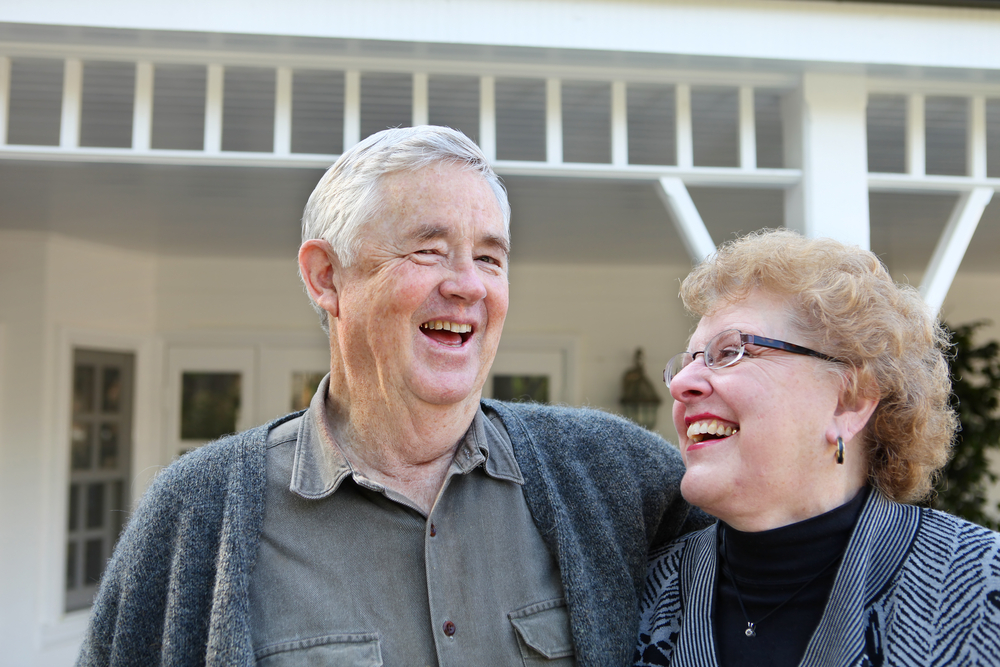
This happy couple stands in the front yard of their home as they are aging in place with their needs and requirements that are possibly much different from their neighbors because each situation is different..
Aging in place design is needs-based
We like creating solutions and having ready answers. We like being able to help when we are asked to do so. It’s a human trait. We want to be able to provide the right advice, suggestion, or solution at the appropriate time. So it seems to be with aging in place, but the emphasis here is a little misdirected.
Aging in place is not a design strategy that is created in advance to apply to a variety of homes without any regard for specific requirements of the actual inhabitants and their needs but rather a treatment option or set of best practices selected on an individualized basis to accommodate the needs of specific occupants in their home of choice.
While we might say that we are designing a person’s home for aging in place considerations, it’s not the home so much that accommodates the occupant in advance – not knowing precisely what their mobility, sensory, or cognitive needs and requirements might be – as it is modifying the home to meet the occupant’s abilities after we know what those are.
Our designs require flexibility
So often we speak of aging in place design more modifications as if they are an absolute that we can find as a set of treatments online or in a catalog. True, we can use universal design and visitability concepts to facilitate a range of aging concerns – and thus, aging in place over time – but we need to remember that our focus in such cases is more of a widespread appeal rather than meeting or addressing an individual’s needs.
We have to remain flexible and go with what the client needs and wants even if it’s not precisely what we would have picked for them, or for ourselves in a similar situation. We need to remember that the client is the one living in their home, paying for the improvements, and living with what we create long-term. It has to appeal to them. It’s fine if we think we’d like to have the design in our homes as well, but the main issue is that they like and want it for themselves.
While it needs to serve their requirements, they are going to be looking at it every day so it should be as attractive as we can make it.
Not cookie-cutter
When we say that something is cookie-cutter, we mean that it exactly the same from instance to instance. When making cookies, we select a premade design of a star, tree, or other shape and cut out each cookie from the dough so that each one looks the same as all the others (except for the frosting, sprinkles, or other toppings that might be added).
In the case of aging in place design solutions, cookie-cutter means that each home would get the same exact design as the other ones we have done and those that we will be doing. This is the opposite of a sensible aging in place design where we take the needs, requirements, abilities, likes, dislikes, and preferences of the client into consideration when creating our proposed solution for them.
We want to address what they need, but often there are many different ways, colors, styles, finishes, and brands to use to do this.
The client is in charge
As much as we may want to be the ones to tell the client what they need to have or what we want to do for them, it’s up to them. We are free to suggest and recommend solutions and design choices for them, but it’s their choice – or someone else in their family who might be advising them.
The great thing about creating aging in place solutions for our clients is that there is no minimum or maximum number of solutions we can offer or that they can request, subject to budgetary considerations. We can use something that has been very popular with several other clients, or we can do something for this client that we use rarely or possibly for the first time with them.
The client is the ultimate judge of what they need and what they will allow us to provide for them.
